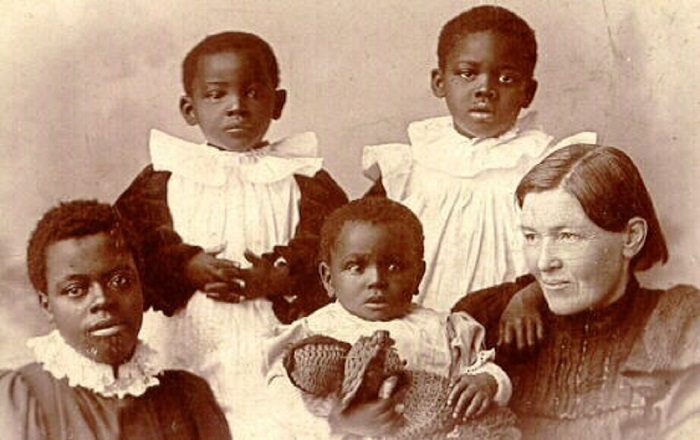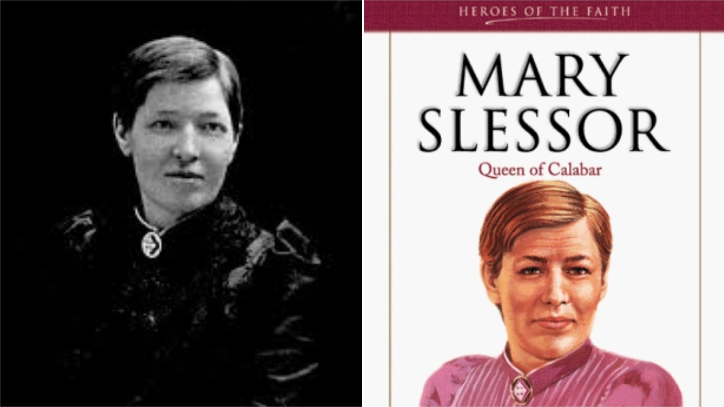Scottish missionary Mary Slessor was the one that stopped the killing of twins in Nigeria. She learned how to speak and understand the native language, and that gained her total trust and acceptance of the natives.
Mary Slessor developed a genuine interest in the rights and well-being of women and children after she was assigned as a missionary to Efik Land in Calabar, Nigeria. As of the 1880s, there were some parts of Nigeria that were still practicing the killing of twins. But, at the arrival of Mary, things began to change and today, the culture has been totally abolished.
Mary Slessor was a Scottish Missionary
Mary Mitchell Slessor was born on the 2nd day of December 1848 into the family of Robert and Mary Slessor in Gilcomston, Aberdeen, Scotland. She was the second of five children; 2 male and 3 female.
Mary was born into a poor working-class family where the parents could not afford proper education for their children. Her father Robert, a shoemaker, originally hails from Buchan but was an alcoholic and unable to keep up with his job. On the other hand, her mother, Mary was a staunch religious woman and a Presbyterian.
One of her major duties in the church was to read each issue of the Missionary Record, a monthly magazine published by the United Presbyterian Church which has the aim of informing members of the needs and activities of missionaries. From her mother, Mary developed an interest in religious teachings.
Meanwhile, the family moved to Dundee in 1859 in search of a job. Robert took a job as a laborer in Baxter Brothers’ Mill, while her mother, being a skilled weaver went to work in the mill also. Mary Slessor and her family lived in the slums of Dundee. At age 11, she joined her parents in working in the mill as a “half-timer”, because she was also attending a school provided by the mill owners.
Robert Slessor together with his two sons died of pneumonia, leaving only Mary, her mother, and two sisters behind.
Mary Slessor First Came to Nigeria in 1875 at the Age of 27
In 1875, following the death of David Livingstone, the famous Scottish Christian missionary and explorer, Mary Slessor decided that she wants to follow in his footsteps, and that was how her mission in Nigeria began. She applied to the United Presbyterian Church’s Foreign Mission Board and had her training in Edinburgh.
Immediately after the training, she set out in the SS Ethiopia on the 5th of August 1876 and arrived in Nigeria about a month later. Upon arrival, she was assigned to the Calabar region, dominated by the Efik people. She was cautioned that the people had superstitions in relation to women giving birth to twins and believed in traditional West African religion.
Mary lived in the missionary compound for three years, working in Old Town and Creek Town missions. In 1879, she contracted malaria and had to travel back to Scotland until she recovered. After 16 months, she returned to Calabar but had a new different assignment in another town that was three miles farther than Calabar.
Brief History of Nigerian’s Belief About Twins
In the 1880s, the Calabar people of Nigeria believed that the birth of twins is an evil curse and abomination. They feared that the father of either of the twins must be a “devil child” and that makes the mother guilty of a great sin.
So, since they were not able to determine which of the infants was fathered by the evil spirit, they made the decision of abandoning both babies in clay pots until they die. On some occasions, the services of a witch doctor would be required to prepare a poisonous liquid which would be given to the twins to die.
Meanwhile, the superstitious belief against twins was not only practiced in Calabar but also in a town called Arochukwu in the far west of Calabar. While the people of Calabar belong to the Efik tribe, Arochukwu is a town in the Igbo tribe’s region. Both towns are in the southeastern part of Nigeria and share some cultures in common.
How Mary Slessor Stopped the Killing of Twins in Nigeria
The major issues Mary confronted in Nigeria as a young missionary were lack of Western education, infanticide of twins, and human sacrifice at the death of a village elder; it was widely believed that a village elder who passed on required servants and retainers to accompany him into the next world.
In order to accomplish her mission, Mary Slessor deployed the strategy of learning the local language and socializing deeply with them. This helped her in having much influence over the people as she grew close friendships with them. She also began to dress like them and eat all their locally made food. Without giving up on her faith, Mary adopted most of the people’s way of life.

Unlike some missionaries, Mary Slessor lived in the midst of the natives and developed a sound knowledge of their customs and traditions. Living a simple life in their traditional houses, Mary became well known by the people for her pragmatism and a good sense of humor. Meanwhile, her teachings were based on the point that it is a sin to kill a human being for whatever reason.
While she consistently enlightened the people, she never ceased to preach the gospel of Christ. Even though speaking against the killing of twins was not an easy task for Mary, with constant education and sensitization, she was able to achieve that. The practice was gradually abolished and today, nothing is being heard about the killing of twins in Nigeria anymore.
Given her strong passion for reversing the obsolete culture, Mary started adopting every child she found abandoned and would care for them at the Mission House. She once saved a pair of twins, a boy, and a girl. Though the boy did not survive finally, Mary took the girl as her daughter and called her Janie. She took her home on one of her visits to Scotland.
Her Legacy Lives On
Before her death, Mary Slessor was able to eliminate most of the heathen practices in the areas she visited. She saved thousands of twins from the bush, stopped the practice of determining guilt by making the suspects drink poison, enlightened the people on the importance of education, helped in healing the sick, and of course, bring to an end the killing of twins.
She was the driving force behind the establishment of the Hope Waddell Training Institute in Calabar.

Mary Slessor died on January 13, 1925, at the age of 66 and was given a state funeral in Cross River, Nigeria. She is remembered in the Church of England with a commemoration on 11 January of every year. Her impact was simply indescribable and immeasurable.
In 1997, she was honored on a Scottish bank note issued by the Clydesdale Bank. Her portrait is used on one side of the £10 note, and on the reverse, she is portrayed holding children in her arms together with a map of the Ibibio and Ekoi in Calabar. To Nigerians, Mary Slessor is simply remembered as the “Mother of All The People”.

